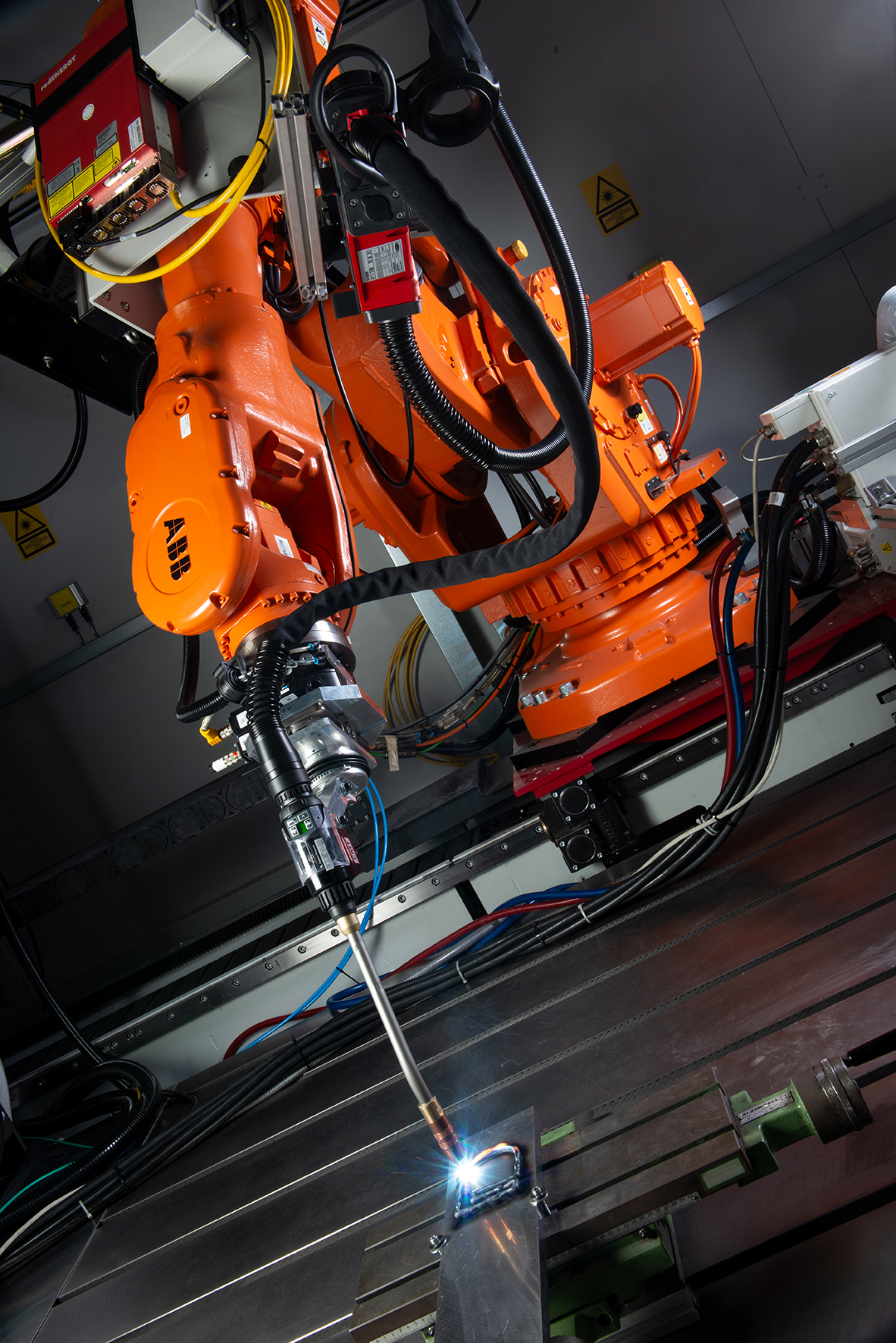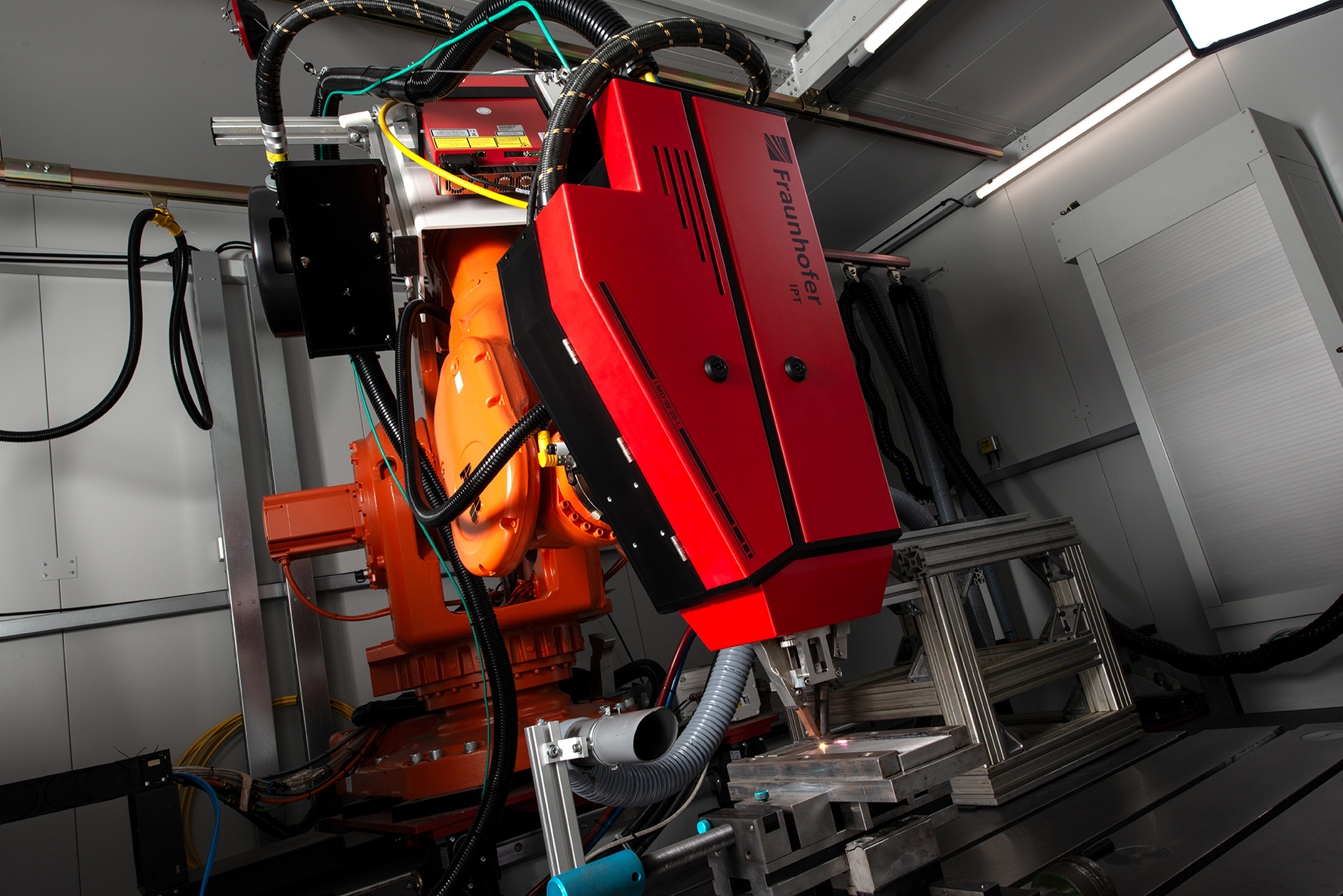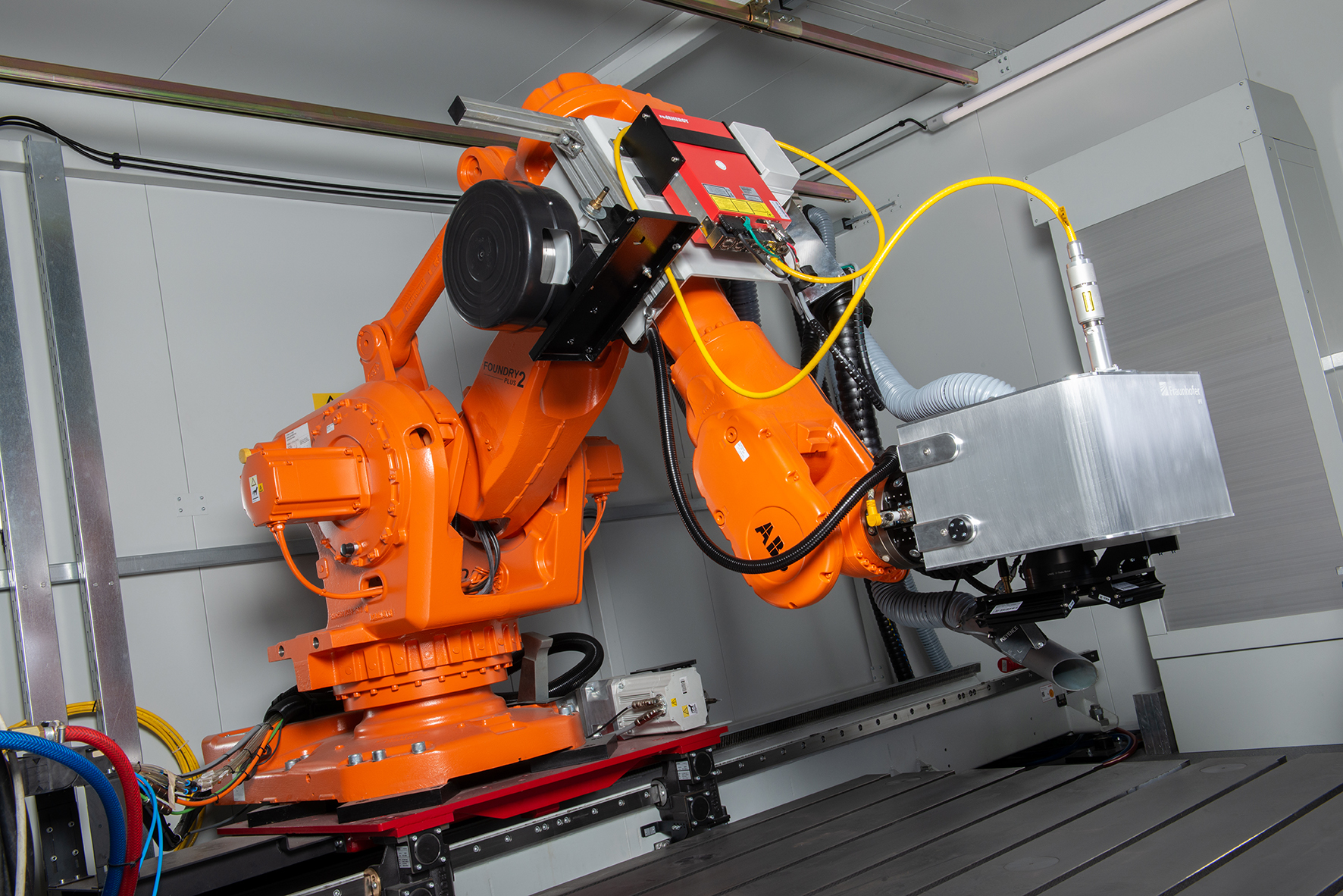Multi-technology platform: Processing large components precisely and cost-effectively with laser and arc
Lasers and electric arcs are commonly used in powerful and sustainable processes for repairing and functionalizing surfaces. However, conventional systems for structuring or metal deposition still involve high investment costs that many companies are unable or unwilling to bear. The Fraunhofer Institute for Production Technology IPT has therefore integrated three processes – laser structuring and laser and arc metal deposition – into a standard industrial robot. The Aachen-based institute is the only research facility in Germany that uses this equipment to conduct contract research for processing large metal and glass components quickly, precisely, and cost-effectively.
With a new processing head for wire arc additive manufacturing (WAAM), Fraunhofer IPT has now qualified the third processing method for use with a conventional industrial robot: The head is based on an application-optimized system from the supplier Fronius Deutschland GmbH and was integrated into an in-house industrial robot. Previously, Fraunhofer IPT experts had already integrated processing heads for laser structuring and laser metal deposition with wire (LMD-w) into the robot system.
Wide range of applications and maximum design freedom
One of the Fraunhofer IPT's goals is to work with industry in research and development projects to develop adaptive and efficient manufacturing processes and process chains that can be integrated into existing production environments cost-effectively. Applications not only include the manufacture, coating and repair of metal components, but also extend to the processing of glass displays with functional surface structures. Thanks to the generous working area and high mobility of the robot arm, components several meters in size can even be processed – such as rotor blades of hydroelectric power plants – with a high degree of design freedom.
Various technologies can also be combined without having to reclamp the component: By simply changing the processing head, a user can combine the processes, for example an additive one such as laser material deposition and an ablative one such as structuring, without great effort.
Compensation of position deviations and quality inspection during production
To compete with existing high-precision systems, the laser structuring head was optimized to automatically detect and correct position deviations. Functional tests confirmed that the new system delivers precise results on matte, painted, reflective, flat and curved surfaces using the built-in compensation methods. In addition, the processing head has a built-in measurement system that can detect and counteract quality variations during the process.
In addition, modeling software has been integrated into the path planning system and can predict surface reflections for different materials and positions of the machining head. In this way, the process has become much more precise and less error-prone.
Sensor technology and artificial intelligence for end-to-end digital path planning
For arc material deposition, Fraunhofer IPT is currently developing and testing end-to-end digitized path planning in the publicly funded research project "KI4ToolPath." The planning software will automatically detect and compensate for process fluctuations using extensive process data obtained by integrated sensors and processed with the help of machine learning algorithms.
5G and VR for decentralized process monitoring in near real time
The enormous amounts of data generated during process monitoring require particularly fast transmission and processing technologies. To ensure that the response to disruptions in the manufacturing process can succeed in near real time, the Fraunhofer IPT relies on 5G mobile communications technology, which is available in Aachen at the 5G Industry Campus Europe. In the research project "Vitamins_5G," a system for process monitoring is being developed that will enable users to monitor ongoing processing even decentrally, i.e. from a greater distance. For this purpose, sensor data is stored in an edge cloud system, processed and displayed in a virtual reality environment in great detail. Using VR goggles, machine operators can observe, monitor and also correct the process without being present on site.
Research cooperation for industrial applications
Fraunhofer IPT is offering companies the opportunity to become part of the ongoing research work in this novel development. The aim is to quickly bring the technologies to industrial maturity and to transfer them into a resource-saving and sustainable production landscape.
Further information on the "KI4ToolPath" research project:
https://www.ipt.fraunhofer.de/en/projects/ki4toolpath.html
Further information on the "Vitamins_5G" research project:
https://www.ipt.fraunhofer.de/en/projects/vitamine5g.html


